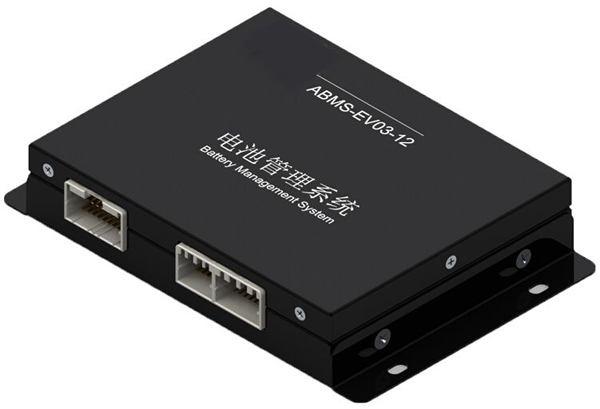The Battery Management System is abbreviated as BMS. The BMS battery management system unit includes a BMS battery management system, a control module, a display module, a wireless communication module, electrical equipment, a battery pack for powering electrical equipment, and a collection module for collecting battery information of the battery pack.
The main function of BMS is to improve the utilization rate of the battery, prevent the battery from overcharging and overdischarging, extend the service life of the battery, and monitor the battery status. In layman's terms, it is a system that manages, controls, and uses battery packs.
The electric vehicle battery management system is an important link between the on-board power battery and the electric vehicle.
BMS collects, processes, and stores important information during the operation of the battery pack in real time, exchanges information with external devices such as vehicle controllers, and solves key issues such as safety, availability, ease of use, and service life in lithium battery systems.

The three core functions of BMS are cell monitoring, state of charge (SOC) estimation, and cell balancing.
1.Battery cell monitoring technology
a. Single battery cell voltage collection;
b. Single battery cell temperature collection;
c.Battery pack current detection.
The accurate measurement of the temperature is also very important for the working state of the battery pack, including the temperature measurement of the single battery and the temperature monitoring of the cooling liquid of the battery pack. This needs to reasonably set the position and number of temperature sensors to form a good coordination with the BMS control module.
The key to monitoring the temperature of the cooling liquid of the battery pack is the temperature of the fluid at the inlet and outlet. The choice of monitoring accuracy is similar to that of a single battery.
2. SOC technology
Single-cell SOC calculation is the key and difficult point in BMS. SOC is the most important parameter in BMS. Because everything else is based on SOC, its accuracy and robustness (also called error correction capability) are extremely important. If there is no precise SOC, no amount of protection can make the BMS work properly, because the battery will often be in a protected state, and it cannot extend the life of the battery. The higher the accuracy of the SOC estimation accuracy, for batteries of the same capacity, the electric vehicle can have a higher cruising range. High-precision SOC estimation can maximize the efficiency of the battery pack.
At present, the most commonly used calculation methods are the ampere-hour integration method and the open-circuit voltage calibration method. By establishing a battery model and a large amount of data collection, the actual data is compared with the calculated data. This is also a technical cheat for each family and requires a large amount of data for a long time. Accumulation is also the most technical part of Tesla. Tesla has applied for more than one hundred core patents in BMS-related fields such as battery cooling, safety, and charge balance.
3. Equalization technique
Passive equalization generally uses the method of resistance heat release to release the "extra power" of high-capacity batteries to achieve the purpose of equalization. The circuit is simple and reliable, and the cost is low, but the battery efficiency is also low.
Transferring excess power to high-capacity cells during active equalization charging, and transferring low-capacity cells to low-capacity cells during discharge can improve the use efficiency, but the cost is higher, the circuit is complex, and the reliability is low. In the future, as the consistency of cells increases, the demand for passive balancing may decrease.
Almost all mainstream automotive BMS manufacturers have passive balancing technology, most of which have active balancing technology reserves. Passive balanced BMS has a large installed capacity and occupies a higher share of the new energy vehicle market, which is much higher than the active balanced BMS market share. The fundamental reason is that the cost factor, active balancing is more of an "optional" function.
In order to strictly control costs, the demand for components of OEMs is based on the principle of "satisfying basic functions and lower costs". The cost of active balancing technology is much higher than that of passive balancing. When passive balancing meets basic functions, OEMs More willing to choose passive balanced BMS.
In addition, the design of the battery management system should be based on the battery voltage, temperature and the environment used to formulate the battery charge and discharge power, feedback information to the vehicle, so that the battery is used in a more comfortable green area. The battery is an electrochemical carrier, and various reactions occur during charging. How to ensure the safety of the battery system is the core issue of battery management technology when there are many unsafe factors in the outside world.
Founded in 2011, WinAck Battery has always focused on the R&D, production and sales of battery pack assembly machine and battery testing equipment. We can provide solutions for the power lithium battery BMS test system.
Contact: Rudy Yan
Phone: 0086- 188 0506 7911
Tel: 0086-592-7297239
Email: rudy@winack.com
Add: WinAck Group, Xiangbei Industrial Zone, Xiamen City, China